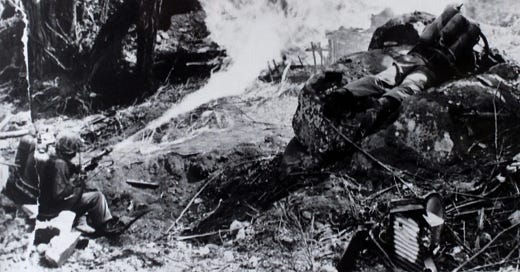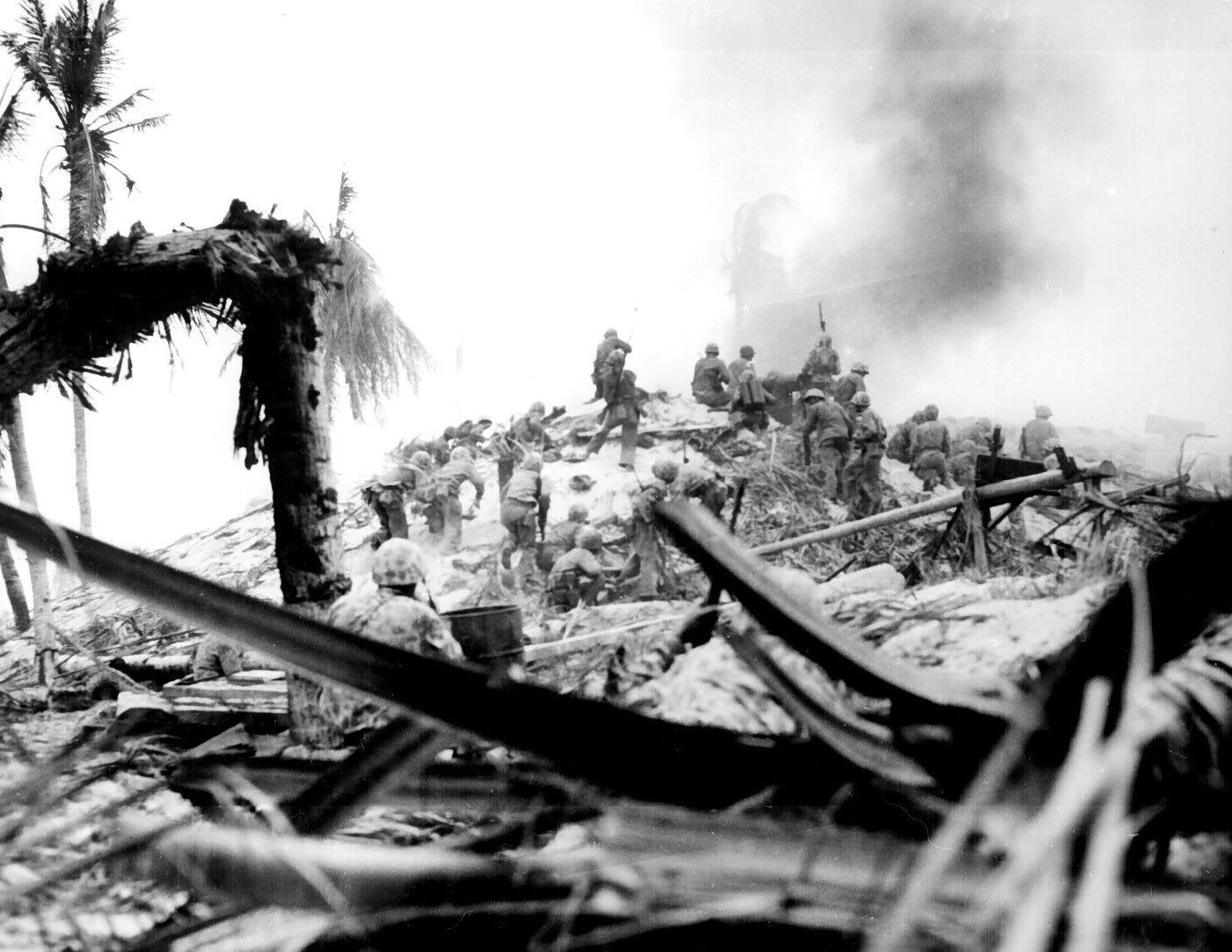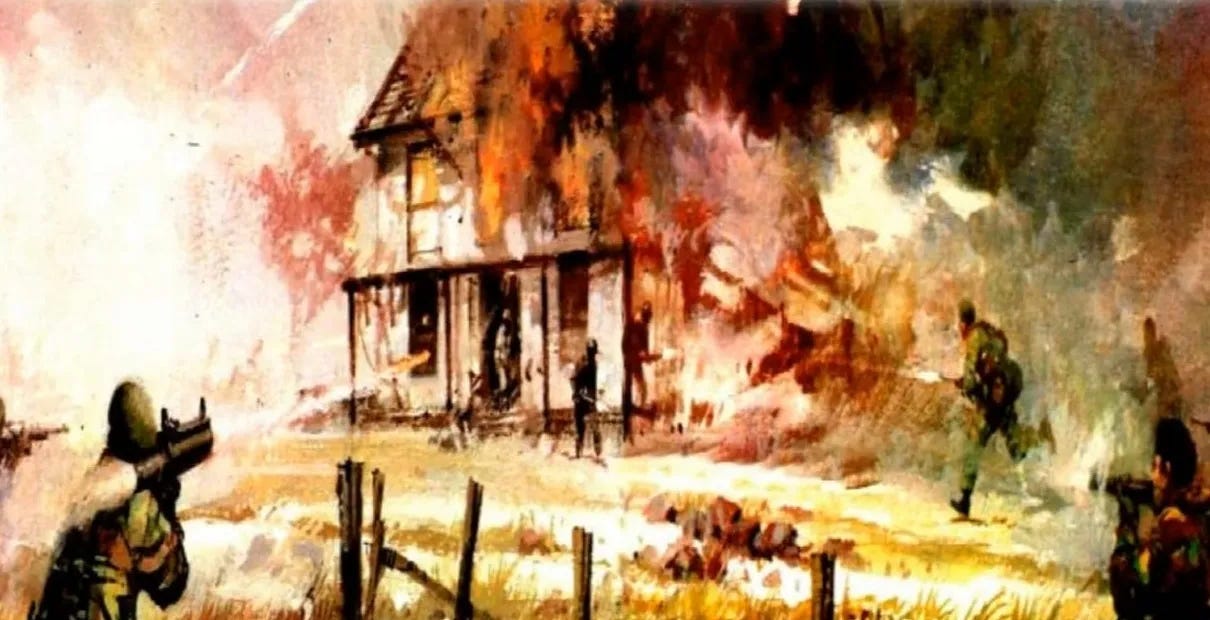America Badly Underestimated the Enemy at Tarawa
Poor planning, anemic firepower and plain racism led to heavy losses
by ROBERT BECKHUSEN
When the U.S. Marines hit the beach at Tarawa on Nov. 20, 1943, what they thought would be a walkover turned into one of the Pacific War’s bloodiest land battles.
Many of their tracked landing vehicles came under fire or became stranded on coral reefs in the lower-than-expected tide. “I remember a violent, turbulent trip shoreward—explosions, detonations, bodies slumping and bloody, and finally crunching to a stop; somebody screaming, ‘Get out of here fast’—throwing equipment out and scrambling over the side onto the beach,” one Marine recalled.
In total, more than 1,000 Marines died in three days of fighting and 687 U.S. Navy sailors perished when the escort carrier USS Liscome Bay exploded after a torpedo attack while supporting the invasion. More than 2,600 Japanese soldiers died.
The bloodshed was so severe, it led the Marine Corps to revamp its amphibious assault tactics.
“I don’t believe more than three hundred [out of 1,000] came through unscathed,” recalled one Marine at Red Beach One—of Tarawa’s three landing zones—in historian Francis Pike’s colossal 2015 book Hirohito’s War: The Pacific War, 1941–1945.
“The beach should have been called Annihilation Beach. It was red with blood.”
The invasion of Tarawa occurred nearly two years after the attack on Pearl Harbor. The U.S. already expelled Japanese troops from Guadalcanal, but Imperial Japan still controlled a vast region of the Pacific. To take the Marshall Islands—and press toward the Japanese home islands—meant that the U.S. first needed to go through Tarawa.
Tokyo knew it. Determined not to allow the Americans to march ashore without resistance as on Guadalcanal, Japanese engineers constructed a maddening series of fortifications on the tiny atoll. Pike’s account of the Marine assault makes for painful and harrowing reading.
Japanese troops on the beaches threw grenades into the approaching landing craft. John Spillane, a baseball pitcher, lost his pitching hand while throwing the grenades back.
Marines jumped from their craft into deep water and drowned. Salt water corroded their radios. Japanese troops slew American troops with samurai swords and later committed suicide. Experienced Marines and war correspondents feared at times during the battle that the Japanese might win.
Pike explains that bigotry played a role in the Marines’ underestimation of the Japanese defenders. Americans bred on a diet of racist propaganda which depicted Japanese as “short, bespectacled, bucktoothed” were taken by surprise when they saw what Imperial Japanese marines actually looked like.
Often the first encounter was sudden, violent hand-to-hand combat with a six-foot-tall Rikusentai. These Japanese marines were crack shots and adept at close quarters fighting. “They were good and we were pretty good, too,” one soldier recalled in Pike’s book. “So it was two of probably the best military outfits in the war.”
The Americans took the island, but the death rate—and other bloody amphibious assaults—contributed to the Pacific Theater’s higher daily mortality rate of 1.78 deaths per 1,000 soldiers compared to 0.36 in Europe. Despite this, desertion rates among Marines were far lower than Army troops in the entire war, Pike observes.
The main changes after Tarawa were tactical. “The Army and Navy had massively overestimated the destructive firepower of naval bombardment,” Pike wrote.
For follow-up assaults, the services would stretch out the bombardments for days, rather than merely hours as at Tarawa.
The Navy heavily expanded its number of tracked landing craft. Marines would later go into battle with substantially more flamethrowers, grenades and obstacle-clearing “bangalores.”
But the invasion was also a premonition of even bloodier battles to come. Only seven Japanese troops survived Tarawa. Many preferred suicide or death in combat—and the American troops were rarely willing to take prisoners.
Read more:








Using the term racist in the context of the Pacific War is doubly anachronistic;
Then and Now.